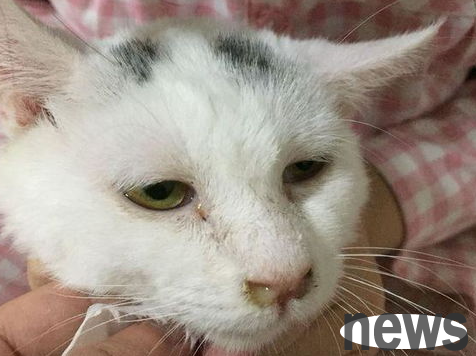Science Popular Science Complications in the treatment of cat renal failure come from the personal experience of the shoveler! Renal failure is an extremely common internal medicine disease in pets. Because there are many causes of renal failure, there are many errors in diagnosis and treatment, and there are many complications after renal failure, which are almost related to major systems throughout the body. If these questions are not clear, it will be difficult for us to treat animals with renal failure, and the probability of pets being cured is greatly reduced.

1. To identify acute and chronic renal failure, you can start from the following points:
to see if the body muscles of the diseased animal are full. Generally speaking, animals with chronic renal failure become thin and their back muscles are atrophy due to periods of uremia and consumption.
Consultation: Acute renal failure is more acute, and vomiting symptoms occur more frequently. When urea nitrogen is high, although the odor of ammonia can be smelled from the mouth, the incidence of secondary oral ulcers is lower.
Imaging: X-ray examination, the size of the kidney is usually larger or unchanged in acute renal failure, while the opposite is true for chronic renal failure; B-ultrasound examination, the changes in the renal cortex and medulla in acute renal failure are much smaller than those in chronic renal failure.
Blood routine examination shows that some chronic renal failure cases can be seen, and acute renal failure cases are rare.
Electrolyte tests: Hypokalemia is more common in the polyuria period of chronic renal failure, while hyperkalemia is more common in the oligouria period of acute renal failure.

2. Complications of renal failure:
1. Elevated nervous system
BUN/CRE, leading to degeneration of nerve cells, causing blood pressure to rise, and finally causing cerebral edema.
2. Motor system
is mainly bones. Renal failure causes hyperparathyroidism, stimulation of a large number of phosphorus ions, causing a decrease in blood calcium, and VD utilization absorption disorders. Causing lesions: osteosomal softening, cellulosic osteitis, bone pain, joint pain, etc.
3. The digestive system has the most obvious lesions. Urea breaks down, produces blood ammonia, stimulates the digestive tract mucosa, causes digestive system ulcers and bleeding. In addition, long-term anorexia, vomiting, and a large amount of gastric acid secretion, which eventually leads to gastric damage.
4. Respiratory system
Urea circulates into the lungs with the blood, causing cellulosic pneumonia, pleuritis, cough, etc. Hyperparathyroidism causes alveolar calcification. Breathing is accelerated, excessive breathing causes acidosis. Heart failure, water retention, hypoproteinemia, can cause pulmonary edema.
5. Circulatory system
Due to acidosis, hypertension, and toxic substances such as uric acid damage the myocardium, it may cause myocardial degeneration, pericardial effusion, and heart failure.
6. Nutritional metabolism
Chronic consumption, blood sugar drop, and protein metabolism abnormality. Weight loss, dehydration.
7. The skin is calcified by the skin system, melanin is deposition, and skin spots and rough hair can be seen.
When every case of renal failure is diagnosed, remember to have an ultrasound examination. Especially the B-ultrasound examination of the kidneys. Look at the shape of the kidneys, the thickness of the cortex and medulla and supplemented by scales, nephrocones, etc., for any abnormal structures and lesions.
3. Treatment
When the body experiences a decrease in blood pressure and the cardiac output is insufficient, the animal is at risk of shock and death at any time. In this case, you must use positive intrinsic drugs in a timely and decisive manner, such as degosin and pimobentad. Dopamine, lipostrazine hydrochloride, 654-2, etc. These drugs can effectively improve renal perfusion.
For acute renal failure, renal function can be maintained above 25%, and lifelong treatment may not be required. If it is less than 25%, it will turn into chronic renal failure and may face long-term, lifelong medication.
Rational diet, meticulous care from the owner, and perfect systematic follow-up treatment are all necessary factors for the sustainable survival of cases of renal failure.